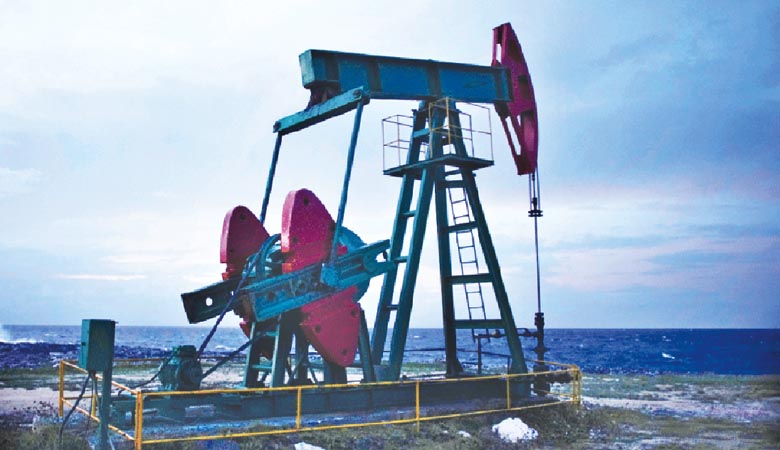Sour crude in sweet spot
Complex supply-demand recipe fires up oil price

Tighter supplies of heavy sour crude oil have combined with increased demand for the high-sulphur refining feedstock from some Asian refiners to hoist Middle East oil benchmarks to multi-year highs. The quiet rise since mid-November to the highest premiums in six years has come with the noise around the global oil market centred on gearing up to producing low-sulphur fuels needed to meet tighter environmental standards for shipping next year, report agencies.
It also underlines the impact of efforts by the Organization of the Petroleum Exporting Countries (OPEC) and Russia to cap oil production while U.S. sanctions on Iran and Venezuela have kept heavy sour oil supply snug for most of this year. Cash Dubai premiums to swaps - a benchmark for Middle East spot crude - hit a six-year-high of $3.08 a barrel on Nov. 14, according to S&P Global Platts, while the term price for Qatari al-Shaheen crude loading in January jumped to a record $3.79 a barrel above Dubai quotes.
Furthermore, the arbitrage windows for Russian Urals and U.S. sour crude shipments to Asia were closed, while Iraq's Oil Marketing Company stopped offering spot Basra crude cargoes for December, narrowing options for buyers, trade sources said. "It's a little surprising given the margin, but demand seems real," said one Singapore-based crude oil trader, catching the eyebrows-raised mood in the market. "Middle East supply is still tight," said a North Asian refining source, confirming the trend.
With new emissions rules from the International Maritime Organization taking effect from Jan. 1, refiners had been expected to process more low-sulphur, or sweet, crude to produce cleaner bunker fuel for ships. Margins on refining high-sulphur fuel oil (HSFO) have also hit all-time lows - even before the ship fuel conversion impact - a factor that should deter refiners from buying heavy sour crude, which yields more of the residue fuel.
But sour crude is cheaper than sweet grades, supporting demand in Asia. Brent crude's premium to Dubai has widened by about 80 cents a barrel on average from last month. Another factor sharpening the appetite for sour crude is that Asian refiners have increased their capacity to process more heavy residue into gasoline and gasoil for better profitability.
There is "significant coking capacity available so people use sour crude in a coker to avoid producing HSFO and produce more distillates (such as gasoil)," said R. Ramachandran, head of refineries at Bharat Petroleum Corp Ltd. Indian refiners are also processing more sour crude as it produces less diesel compared with sweet crude from Nigeria, he added. "We are in surplus diesel situation now so people will try to contain diesel production and use more of sour grades," he said.
Refineries are losing more than $20 for each barrel of high-sulphur fuel oil they produce from Dubai heavy sour crude, Refinitiv data showed. This has distorted bellwether margins at a typical Singapore complex refinery, which have fallen close to zero, the lowest in a decade. Yet the margin weakness hasn't deterred refiners like Japan's Cosmo Energy Holdings from producing the fuel - there is still demand, a company spokeswoman said.
Indeed, spot demand for HSFO is still strong, two North Asian refining sources said, as buyers are having trouble sourcing large cargoes in the market at a time when low - for now - prices are unlocking demand. In another twist on the introduction of new standards for shipping emissions, some vessels have installed scrubbers, or emission-removing devices, that mean they can use HSFO rather than buying low-sulphur fuel. Those ship are currently enjoying savings of $150 to $200 per tonne of HSFO they consume, one of the refining sources said.


